The Rosy Road to Provence: A Wine Tour in the South of France


Guy Hibbert discovers great domaines and delightful destinations.
Flights to Nice: check. Passports: check. Hire car: check. Allons-y! Sporting our rosé tinted shades, let’s enjoy some quintessential French pleasures – the esprit of an open road, the charm of historic towns and villages and the taste of sunshine in a glass.
Rosé sales are on the up and Provence has laid claim to the premium end of the market. I spoke to Elizabeth Gabay, pink wine expert and author of the Buyers Guide to the Rosés of Southern France. “With an emphasis on quality, everyone is looking more at rosés which reflect their terroir and rosés which age well,” she said. “For good rosés it will no longer be the case of finishing the rosé in autumn and racing for the new vintage in the new year.”
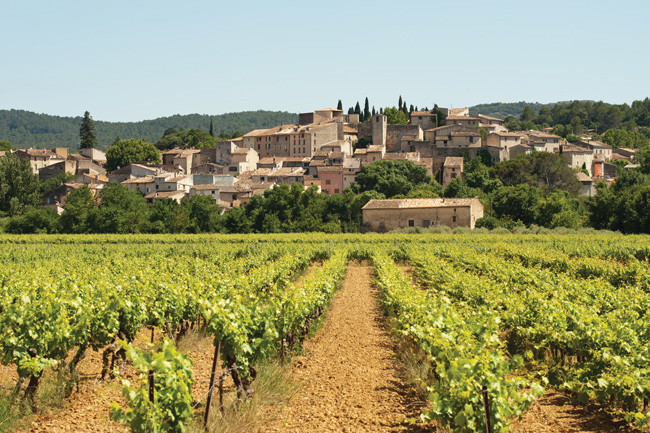
The village of Carcès in Provence, as seen across vineyards © Shutterstock
A Rosé by Any Other Name…
In this mini-tour we are focusing on the wines you are most likely to come across – the Côtes de Provence AOC (Appelation d’Origine Contrôlée). This AOC produces the vast majority of Provence’s rosé – around 116 million bottles. Nestled amid the 50,000 acres of vineyards, there are around 350 producers and five geographical sub-regions which are worth getting to know because they each have their unique characteristics: Côtes de Provence Sainte-Victoire, Côtes de Provence Fréjus, Côtes de Provence La Londe Côtes de Provence Pierrefeu, and Côtes de Provence Notre-Dame des Anges. It can take a couple of hours to drive from one side of this region to the other but there is no need to race off on the autoroute just yet because the vibrant city of Nice is the surprising first port of call on our wine trail.
Pause to take in the beauties of Nice’s Vieille Ville, enjoy some shopping in the Cours Saleya markets and be ready next day for an easy drive into the hills behind Nice. This is what is known as the Arrière-pays niçois, and it contains a wine appellation favoured by locals and connoisseurs, but one that is hardly known elsewhere. Just an arrow flight from the DIY superstores on the outskirts of western Nice lies the hilltop AOC Bellet vineyards. South- and west- facing, sunny, cooled by winds that come down the Var valley or refreshed with salty sea air, the sloping terroir, with its sand-lime pebbly soil, produces white, red and rosé wines of high quality and original flavours. Here, for their rosés they use a local grape varietal called Braquet, a fragrant black grape. It is nothing like classic Provence rosé made with Cinsault and Grenache, and it’s not the cheapest rosé either, but it is unique and if you’re interested in unusual wines it makes for a fascinating detour.
There are nine domaines on the steep hillsides overlooking Nice and towards Cap d’Antibes. For a glamorous dégustation try Château Crémat. Once a 1920s Gatsby-esque party villa, it has been painstakingly restored and its historic links with Coco Chanel brought to life in the sumptuous interiors. By contrast, nearby Domaine de la Source is a small, family affair where the welcome is friendly and the wines equally rewarding.
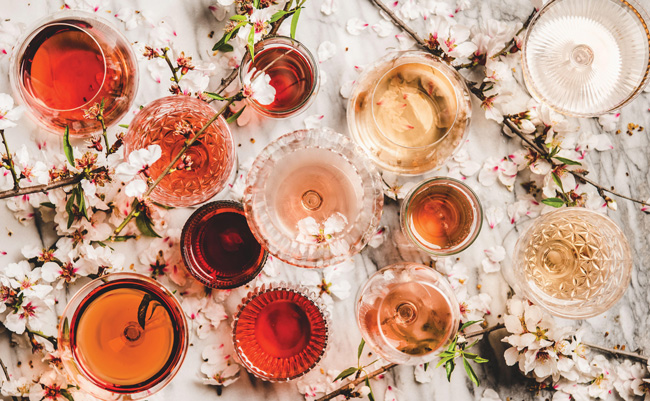
Rosé comes in many shades, from deep, almost red hues to vibrant salmon to the palest of pinks. Peach, Melon, Mango, Pomelo, Mandarin and Redcurrant are the official names of the six main colours of the rosé wines made in Provence © Alamy
Heading Inland
Leaving Nice behind, we head west until the ochre- and rose-coloured Esterel massif dominates the skyline. Unlike the predominately limestone geology of much of Provence, this area has volcanic origins and is a lovely spot for hiking if you have the time to stop. Near the seaside resort of Fréjus, we enter the first of the classic Côtes de Provence regions. But first I’d recommend a worthwhile detour inland which will take you to the doors of the Maison des Vins Côtes de Provence in Les Arcs sur Argens. This boutique acts as an ambassador for the local wines: take a course, try a free tasting, and find out what makes these wines so special – English, Dutch, French and German are all spoken. And you can buy from a selection of more than 800 wines from 270 producers – all at estate prices.
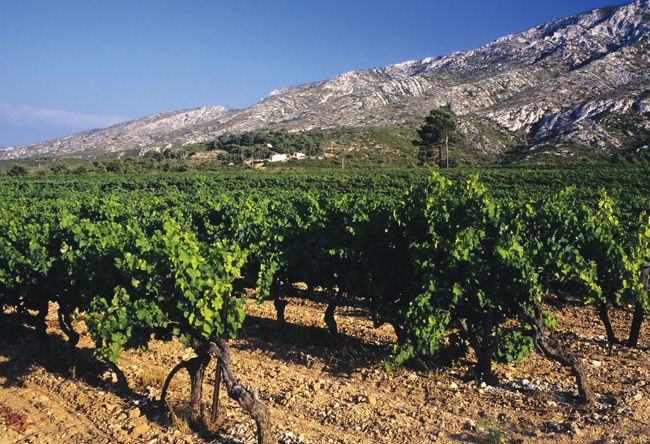
Vineyards in the Massif des Maures © Shutterstock
Alternative Riviera
Our dégustations begin at nearby Château des Demoiselles where you can sample their delicate, pale salmon-coloured rosé which is proudly organic and vegan. Its sister vineyard is Château Sainte-Roseline, which produces some fine cru classé wines including a rosé on behalf of Kylie Minogue Wines. For an equally star-studded dégustation you cannot beat Château d’Esclans, the creamy yellow Tuscan-style château which produces no fewer than six rosés for all occasions. D’Esclans is the home of the legendary Whispering Angel rosé, the number one French wine import into the USA, which is raved about by critics and consumers alike.

Château de Crémat plays up its Coco Chanel heritage for a dose of glamour © Château de Crémat
Saint-Tropez’s international reputation for super- yachts and sun-kissed celebrities was established many decades ago. But for a very different experience, visit out of season and make sure you walk around the quaint historic quarter known as La Ponche. If you find yourself there in high season and it becomes too much, you can leave the crowds behind and get away from it all at any one of some 30 Côtes de Provence vineyards nearby. On this sunny headland, the vines benefit from sea breezes and Argile soils that create fresh, fruity rosés. Top of the tree is the ubiquitous Château Minuty, which has belonged to the Matton-Farnet family for more than 80 years and produces an exquisite prestige rosé as well as more affordable bottles for everyday drinking.
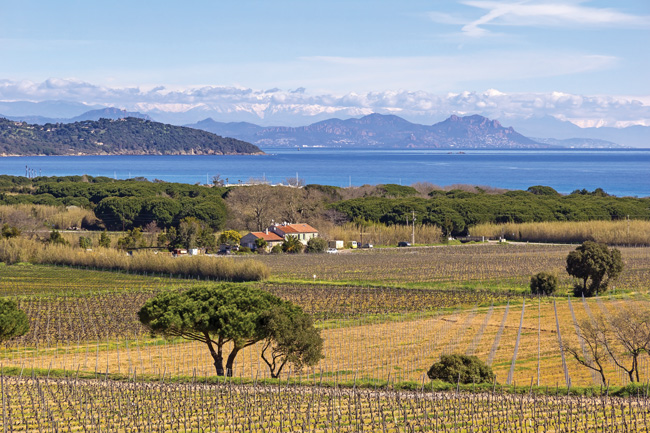
The Mediterranean coast near Saint-Tropez, with vineyards in foreground and the Alps in background © Shutterstock
Just a 20-minute drive from the hedonism of Saint-Tropez is the Massif des Maures, an inland plateau dotted with some of the finest Provence winemakers. For example, there’s Château Saint-Maur, one of only 22 in the region awarded cru classé status. These are rosés that can happily feature on the cartes des vins of the very top Paris restaurants. Château de Chausse, now in American hands, is one domaine where you can sample two uniquely different rosés, one a typical pale pink made with Cinsault and Grenache, the other a coral tint made from Syrah and Rolle grapes. There are dégustations galore in this area so you might want to stop over at the beautiful Château Saint-Roux, which offers a wide range of wine-tourism activities.
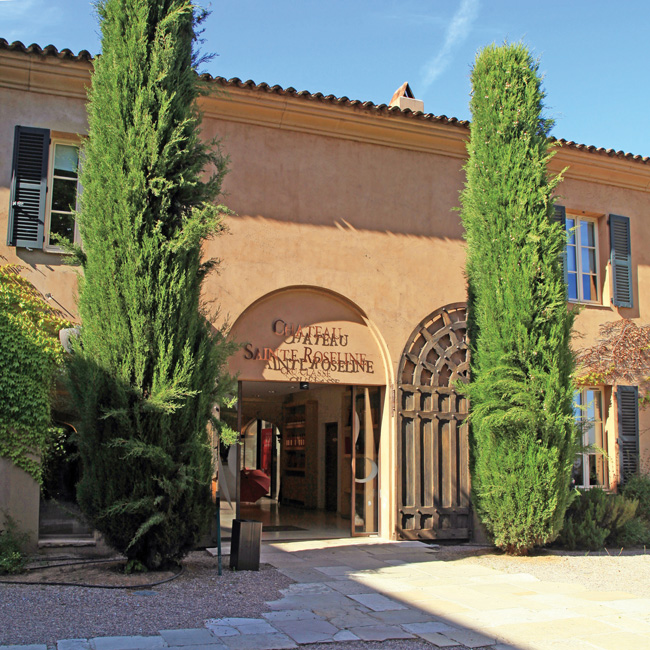
Château Sainte-Roseline produces some fine cru classé wines © Shutterstock
Clifftop Beauties
Now return to the coast road and head from Rayol- Canadel-sur-Mer to Le Lavandou for a clifftop drive with stunning vistas. Stop for lunch and a stroll around the charming hilltop town of Bormes-les-Mimosas, one of France’s celebrated floral villages (and, of course, the host of a Mimosa festival each February).
This is the Côtes de Provence La Londe region. For a wine tasting with a magnificent view of the Île du Levant and Port-Cros (and a picturesque château) head for Château de Brégancon. If you fancy a glass of rosé with soft sand between your toes, or a cooling dip in the Med, stop for lunch at Château Léoube (owned by British brand Daylesford Organics), which has a beach-side café a few metres from the vineyards. Or for a wine-free dip, a short drive along the coast will bring you to the turquoise waters and sandy, pine-fringed bay of the Plage de l’Argentière.
From this point, you find yourself in the original (and, some would say, best) French Riviera. Hyères and the Giens Peninsula were popular over a century ago with British aristocracy and a smattering of famous European writers, but since those days it has been largely the secret of the French holidaymaker. The town of Hyères itself is a pleasure to discover, or head out to the island of Porquerolles where you can stay at the Auberge des Glycines and visit the island’s top winery, Domaine de la Courtade.
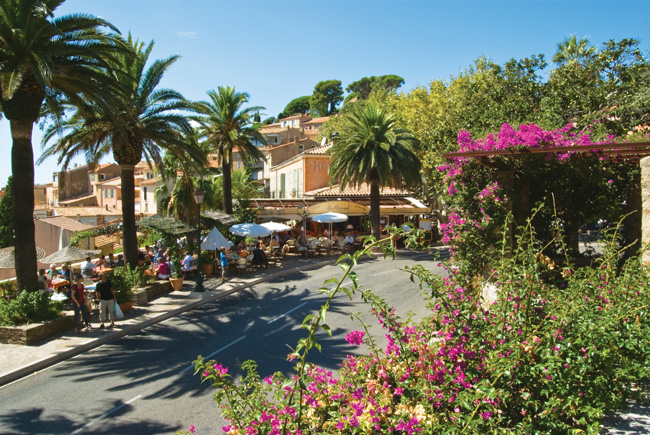
Take some time out to relax in fragrant Bormes-les-Mimosa © Alamy
Back on terra firma, it’s time to head north inland to the Côtes de Provence terroir known as Pierrefeu. An exceptional dégustation awaits you at Château Sainte-Marguerite, cru classé since 1955. Their Symphonie rosé is highly regarded and the 2019 vintage received 97 points at the Decanter World Wine Awards in 2020, which is remarkable for a wine costing around €20. There is plenty to see in this area so you might want to book an overnight stay at a vineyard. The chambres d’hôtes rooms at La Commanderie de Peyrassol offer a stylish rustic Provençal vibe. Eating at the Chez Jeanette restaurant gives you the chance to sample the palest pink Peyrassol rosé, followed by a stroll or perhaps a calèche (carriage) tour around an impressive sculpture garden.

Hyères is another fabulous destination in this part of France © Shutterstock
Green Interior
In the final part of our tour, we head further inland to Provence Verte, the green heart of Provence. The lovely old town of Lorgues is a worthwhile stopping point, as are the nearby hilltop villages of Tourtour and Flayosc. There are 14 wine domaines to visit around Lorgues, but the highlight would have to be Château de Berne. Why not treat yourself to some end-of-trip indulgence? Set in no less than 2,500 acres of grounds, it is a Relais et Châteaux hotel with a spa, pool and restaurants. A top-notch wine estate completes the picture: in their famous square bottles, the Berne rosés are much admired. The nearby village of Cotignac is charming and has an impressive cliffside walk with troglodyte dwellings. For a more affordable accommodation option in this area, you could try Clos de l’Ours, a family-run vineyard whose L’Accent wine is enjoying great reviews.
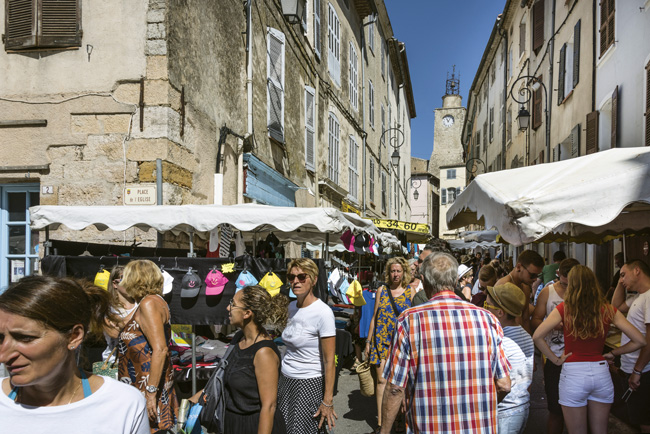
Soak up the atmosphere in the lovely old town of Lorgues © Shutterstock
Provence rosé is in good hands. Vineyard owners are largely committed to producing high-quality organic wines which respect local terroir and traditions. And not surprisingly, wine tourism is flourishing: as head of communications at CIVP (Conseil Interprofessionnel des Vins de Provence) Carole Guinchard told me: “The wines of Provence are already a brand.”
If, like me, you are still getting to know this brand, then a tour of this beautiful region is the best way to discover more. Santé and bonne route!
From France Today Magazine
Lead photo credit : Touring the vineyards of Provence is a wonderful way to get to know the wines and the countryside itself © Alamy
Share to: Facebook Twitter LinkedIn Email
More in Côtes de Provence, nice, Provence, rosé, Saint-Tropez
By Guy Hibbert
Leave a reply
Your email address will not be published. Required fields are marked *



